The historic royal capital city of Jaipur in the northern Indian state of Rajasthan is a delightful and charming blend of lively culture, rich history, stunning palaces, wonderful art, and delicious cuisine. Because of this beautiful and eclectic mix, there is always something to do in Jaipur, India. Founded by the ruler of the city of Amer, Jai Singh II, on November 18, 1727, this eastern Rajasthani city is considered an early example of a planned Indian city.
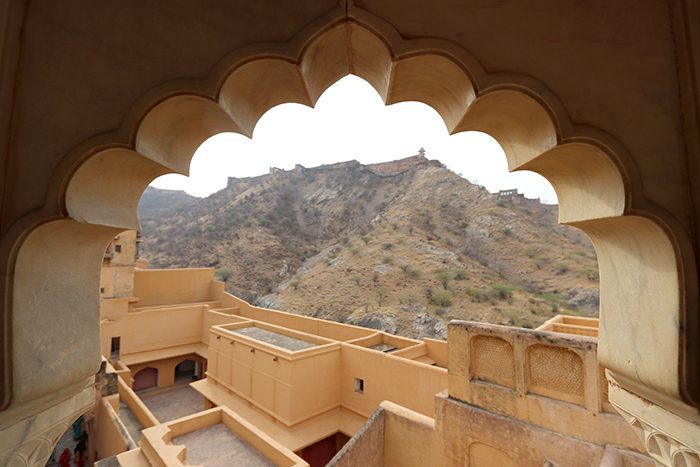
Known around the world as The Pink City because of the rosy tint many of its buildings and structures have, it is thought that Jaipur’s pink hue comes from an effect used to mimic the color of red sandstone.

A popular tourist destination, this bright and chaotic city is a part of the Golden Triangle tourist circuit along with Agra and Delhi, and also serves as a gateway to other Rajasthani cities like Jodhpur, Jaisalmer, and Mount Abu.
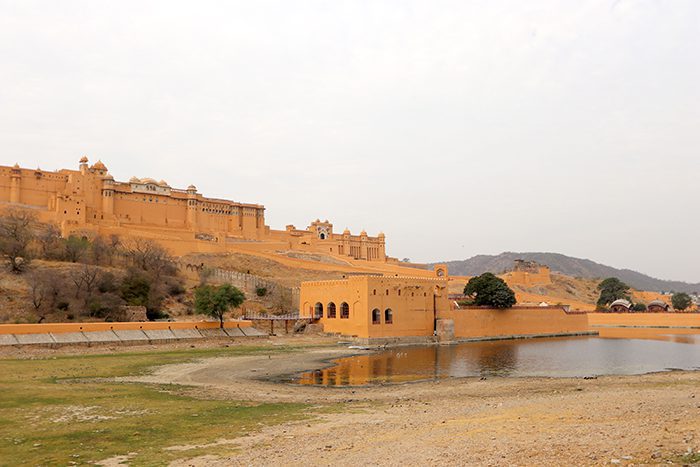
Jaipur also is home to two fantastic UNESCO World Heritage Sites, one of which I visited during my time in the city in February of 2018. This city has so much to offer and was such a highlight of my first trip to India. If you need to apply for an India e-visa in order to visit the city, you can do so here! These are the top 10 things to do in Jaipur, India.
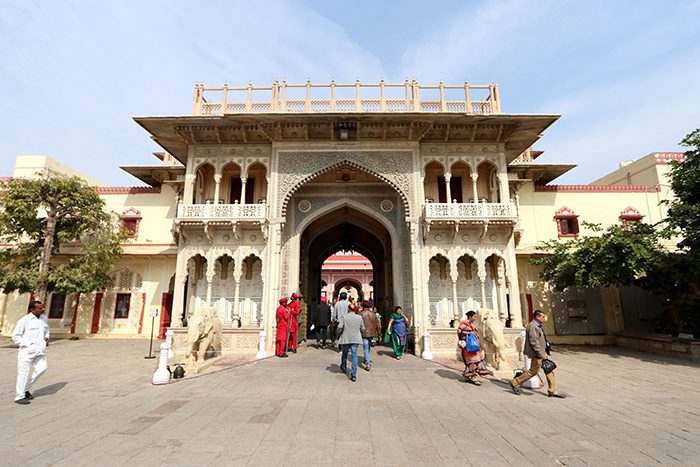
Located in the very heart of the Old City is one of Jaipur’s most gorgeous and most prominent landmarks, City Palace. The popular tourist attraction is actually a complex made up of several buildings, including Chandra Mahal and Mubarak Mahal, and was built by Maharaja Sawai Jai Singh II between 1729 and 1732.
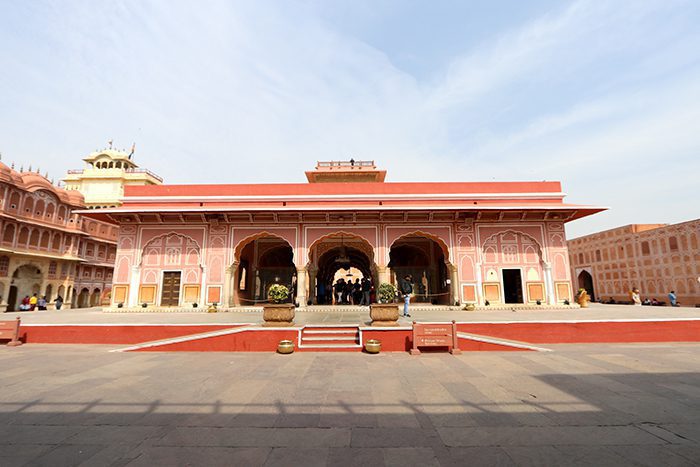
Like most of Jaipur’s buildings, the palace complex is a fusion of the Mughal and Rajput architectural styles, though buildings like Mubarak Mahal also have Islamic and European architectural influences.
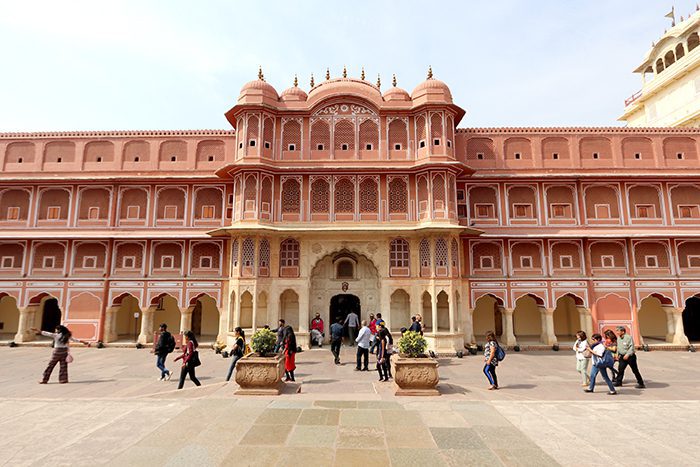
The palace’s history is inextricably linked with that of the city and its rulers, as the city sprang up around the complex, whose seven-story Chandra Mahal served as the home of the royal family.
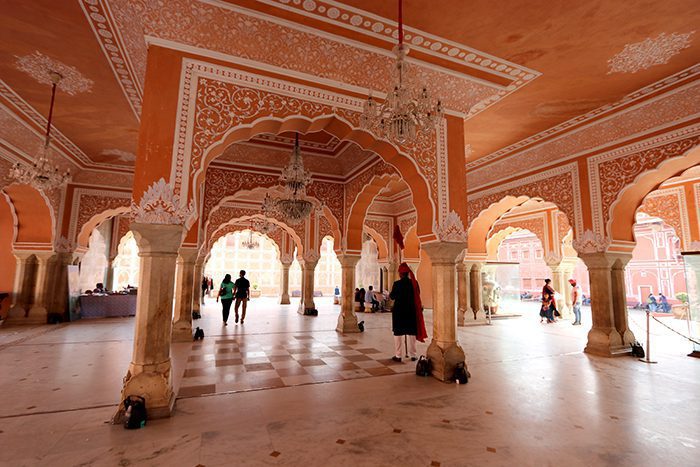
Other noteworthy locations within the complex include the Pritam Niwas Chowk courtyard, whose intricately decorated gates are dedicated to Lord Vishnu, Lord Shiva-Parvati, Lord Ganesha, and the goddess Devi; the Diwan-i-Am hall, which serves as an art gallery; the Maharani Palace, which was the residence of the royal queens; the Bagghi Khana museum; and the Govind Dev Ji Temple, which is dedicated to Lord Krishna.
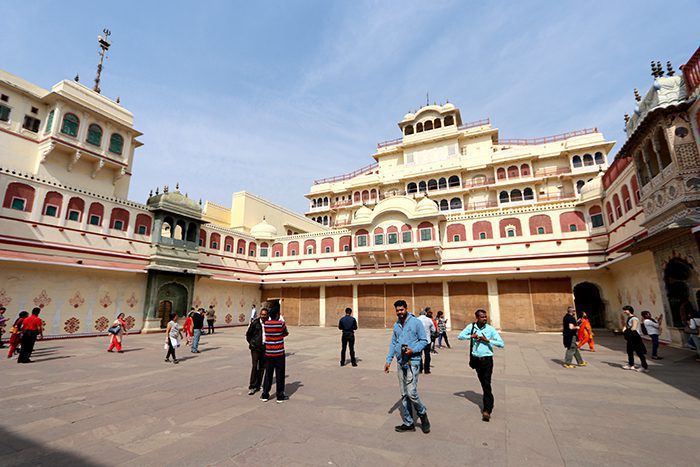
During my visit to this royal residence, I was struck by the beauty of the entire complex, especially its ornate gold doors and intricate carvings. If you visit Jaipur, India looking to dive into the city’s expansive history and culture, the Royal Palace is a fantastic place to start!
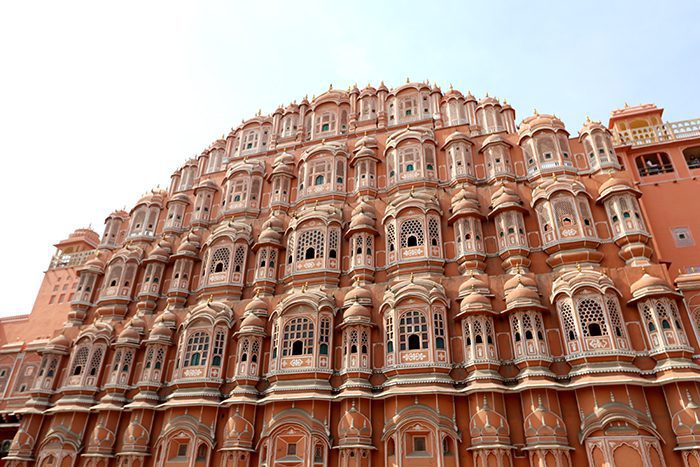
One of the most famous buildings in Jaipur, India, and arguably one of the most beautiful, is Hawa Mahal, or the Palace of the Winds. This gorgeous, red and pink sandstone structure was designed by architect Lal Chand Ustad to match the color palette of the rest of the city. The building, which was built in 1799 and commissioned by Maharaja Sawai Pratap Singh, a Kachwaha ruler of Jaipur, was directly inspired by the design of the Khetri Mahal in the state of Jhunjhunu.

Located on the edge of the City Palace, this unique palace’s architecture is somewhat reminiscent of a beehive, with 953 small windows that are decorated with complex latticework whose purpose was to allow the royal women inside to observe the outside world without being seen, as it was against the law for them to be seen without their face covered.

The Hawa Mahal rises fifty feet above the streets of Jaipur and is a fusion of Hindu Rajput and Islamic Mughal architecture. The building is maintained by the Government of Rajasthan’s archaeological department and is particularly beautiful at sunrise when its rose-colored façade is bathed in the golden light of the rising sun. You have to see this place for yourself. It’s incredible!

One of the best culinary experiences you can have in India is sampling the thali in every city you visit. “Thali” is the collective Indian name for a large platter of food that comes with an assortment of vegetables, side dishes, chutneys, curries, bread, and rice. Every city, state, and region in the country does thali a little differently and it’s fun to compare and contrast the regional variations, which is why I highly recommend you try a Rajasthani thali during your time in Jaipur, India.
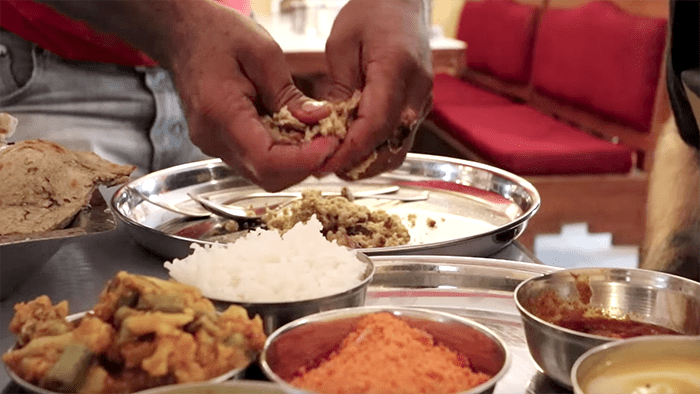
For my first foray into the world of Rajasthani thalis, my local friend Karan took me to Torba Rooftop Café, one of the best spots in the city to have this meal. In the six weeks I’ve spent in India so far (as of February of 2019), I’ve never had a thali like this one. My waiter crumbled a large ball of bread on my place and then mixed various curries, vegetables, and yogurts with it.
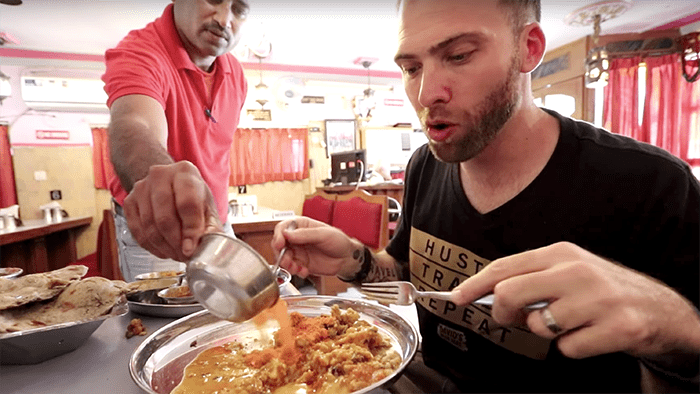
I enjoyed the omelet-like mixture with some roti on the side and was pleasantly surprised that it wasn’t spicy at all. I usually love spicy food, but as I was still recovering from a week-long stomach illness, I wanted to take it easy on the heat. All in all, this thali was incredibly different from the northern ones I’d had earlier in my trip and is still the most unique variation I’ve ever come across. No list of the 10 things to do in Jaipur is complete without having a Rajasthani thali!
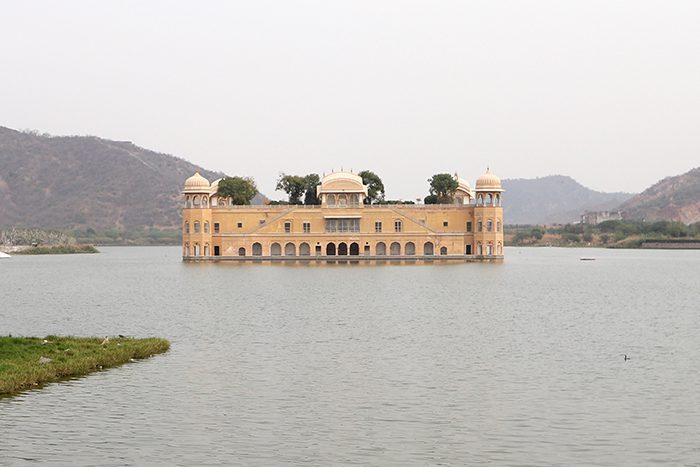
If there is a single word that adequately describes the city of Jaipur, it would be “unique.” Nowhere is that more evident than Jal Mahal, a city palace that stands in the middle of Man Sagar Lake, which is surrounded by hills. Jal Mahal, whose name literally translates to “Water Palace,” is a five-story building that is made of red sandstone and was built in the Rajput architectural style. What makes this palace so unique is that four of its five floors are submerged beneath the surface of the lake.
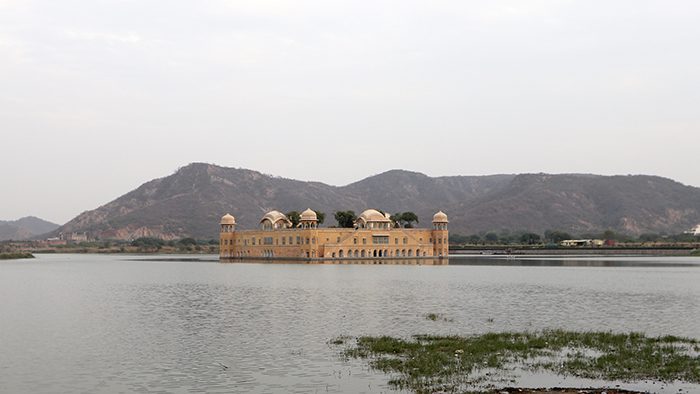
Jal Mahal was built in 1750 to serve as a duck hunting lodge for Maharaja Madho Singh I. The palace and surrounding lake were renovated and enlarged by his son, Madho Singh II, in the 18th century. While the palace itself is not open to the public, it can be viewed from the lakeshore and from Man Sagar Dam on the eastern side of the lake.
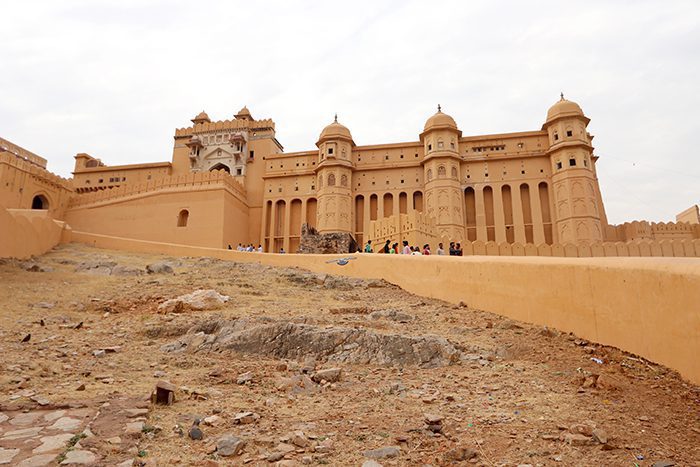
Situated high on a hill in the Aravalli Range overlooking Maota Lake in the town of Amer, roughly seven miles from Jaipur, India is Amer Fort.

This massive and opulent four-level fort and palace, made from marble and red sandstone, was built in the late 16th century and consists of a series of gates and cobbled paths, large ramparts, four courtyards, a temple, a 12-kilometer wall that surrounds the entire fortress, and a subterranean passageway that links the palace to the nearby Jiagarh Fort.

This underground tunnel was built to be used as an escape route to evacuate the royal family from the palace to the safety of Jiagarh Fort during wartimes.
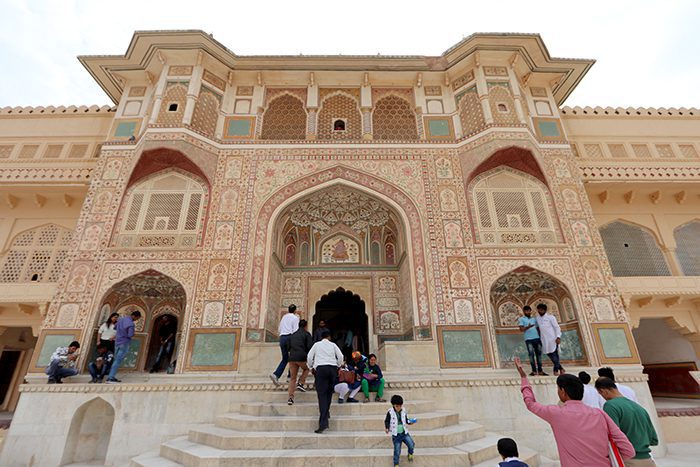
The main tourist attraction in the Jaipur area, Amer Fort sees as many as 5,000 visitors per day and upwards of 1.4 million every year, and between its gorgeous exterior and colorful and ornate interior, it’s not hard to understand why so many people flock here.
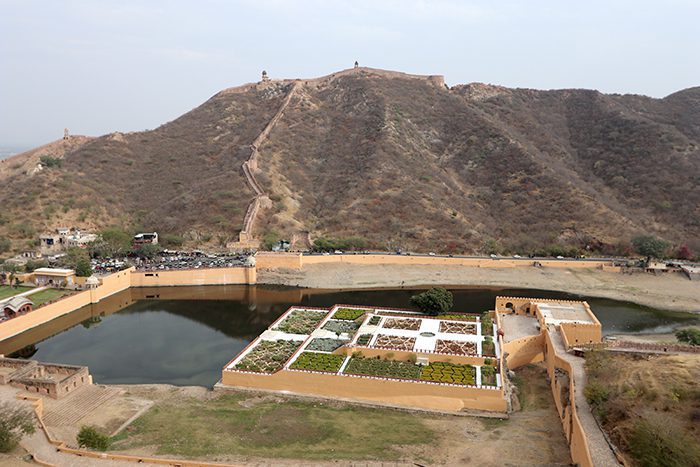
Because of its historical significance, the fort was named a UNESCO World Heritage Site in 2013.

There is no doubt in my mind that Amer Fort is easily one of the top 10 things to do in Jaipur. It was very different from the European forts I was used to visiting!
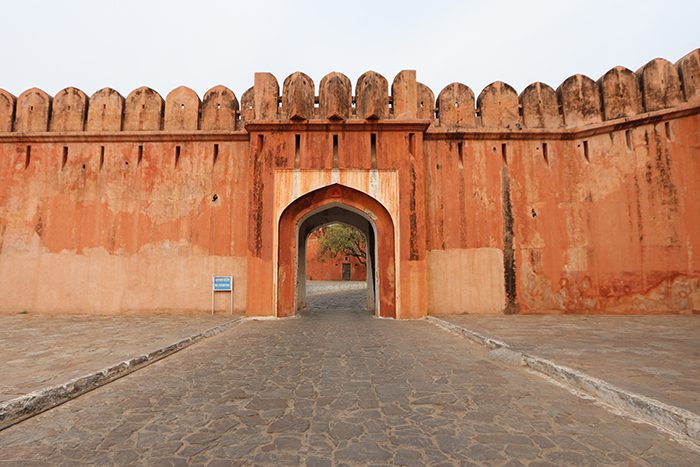
Located on the Cheel ka Teela promontory in the Aravalli Range, just 400 meters above Amer Fort, is Jiagarh Fort. Originally built in 1036 and reconstructed in 1726 by Jai Singh II to protect Amer Fort and its palace complex, which is connected to Jiagarh by a series of encompassing fortifications and an underground passageway, Jiagarh Fort is three kilometers long, one kilometer wide, and similar in its structural design to Amer Fort.

One of Jiagarh Fort’s most notable attractions is a massive, wheeled 18th-century cannon named Jaivana, which has a 20-foot-long barrel that fired shot balls that weighed over a hundred pounds. It’s the largest cannon on wheels in the world and was only fired once!

The extensive fort complex also includes courtrooms, halls with screened windows, an armory, a museum, gardens, courtyards, and a central watch tower that provides exceptional views of the entire area.
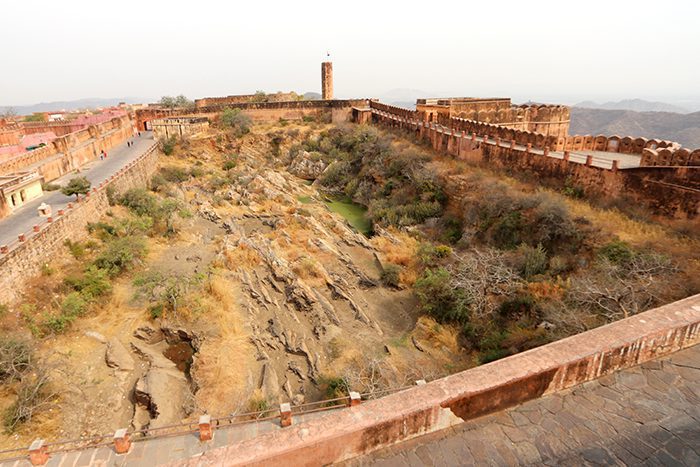
Fifty caretakers live on the grounds of Jiagarh Fort for upkeep. During my time there, I toured the fort and got to see the spots where archers would fire their arrows from the ramparts, as well as the complex’s other cannons, which could fire cannonballs up to 3.5 kilometers in order to fend off invaders.

A visit to Jiagarh Fort is an absolute must and is, without question, one of the top things to do in Jaipur, India.
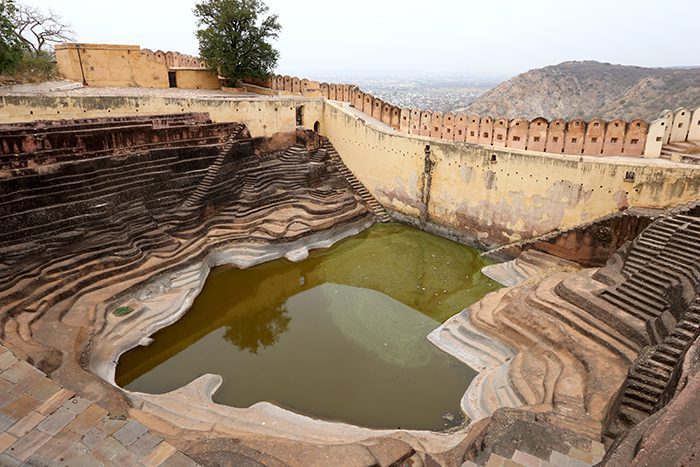
Another reason why visiting the Aravalli Range is one of the best things to do in Jaipur, India is it’s also the home of the magnificent Nahargarh Fort, which is part of what was once a formidable defense ring for the city along with Jiagarh Fort and Amer Fort. Nahargarh Fort actually shares and extended wall with Jiagarh Fort.
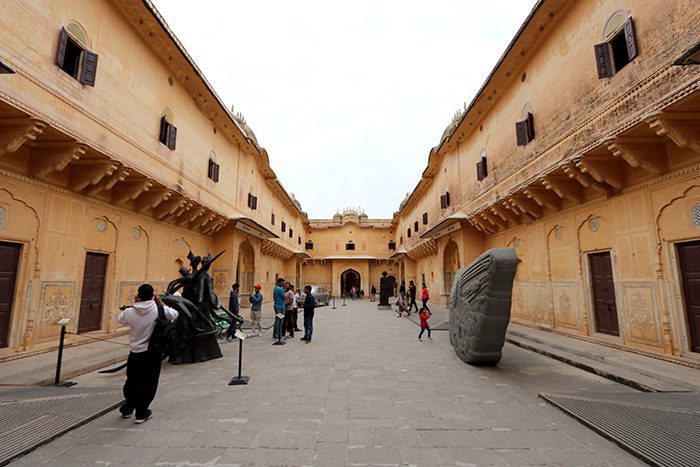
Originally named Sudarshangarh Fort after it was built in 1734, the name was later changed to Nahargarh, which translates to “abode of the tigers.” It is believed that the fort’s second name was after a Rathore Prince named Nahar Singh Bhomia, who, according to legend, owned a piece of land adjacent to the site where the fort was constructed.
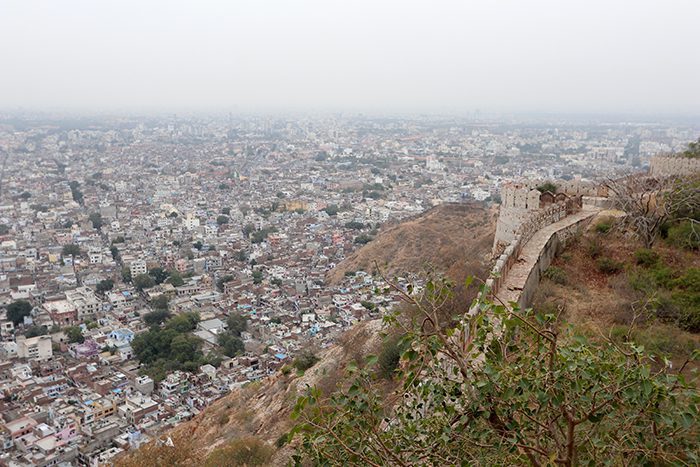
The legend goes on to say that the spirit of Prince Nahar began haunting the fort during its construction and was only pacified when a small temple dedicated to him was built inside the fort.
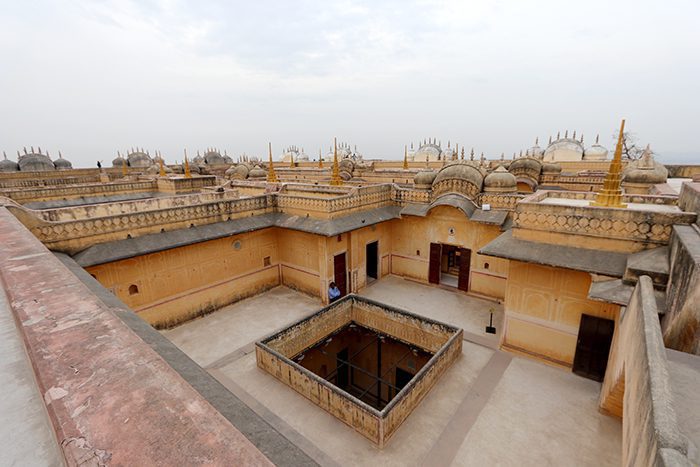
The fort is considered an example of Indo-European architecture and offers stunning views of Jaipur. When I was there, I enjoyed a delicious lunch of daal and naan at the fort’s fine dining restaurant, Once Upon A Time.
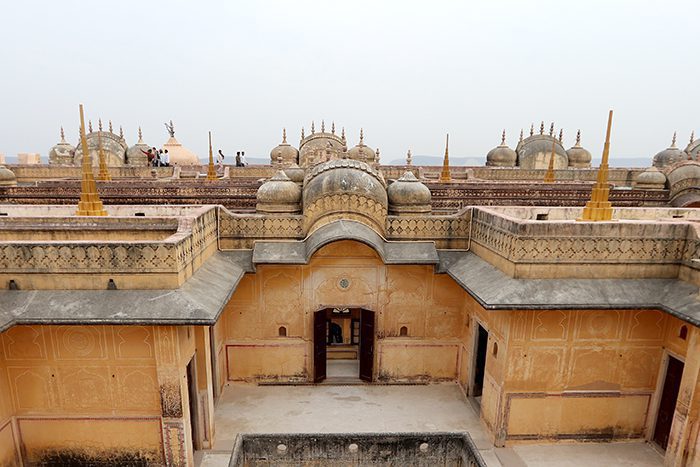
Even if you’re not a history buff, a visit to Nahargarh Fort is worth it for this outstanding meal alone!

For travelers seeking some of the finer things Jaipur has to offer, a visit to Johri Bazaar is a must. This lively and crowded shopping market is extremely well-known for the exquisite Rajasthani jewelry and ornaments that can be bought from many of the vendors who work the colorful stalls along its labyrinthine alleyways.
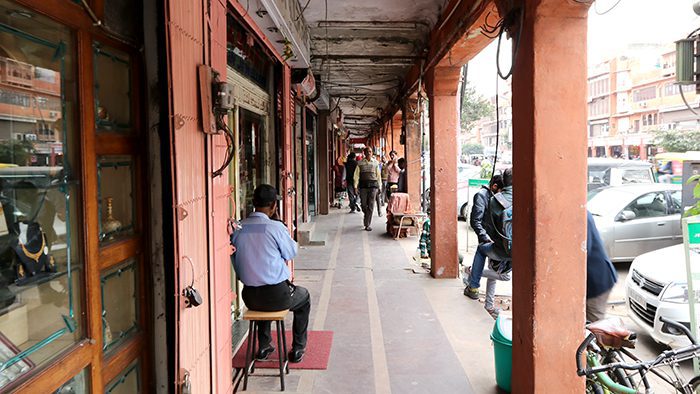
Throughout the 1.2 mile-long market, you’ll also find vibrant displays of sparkly cloths, saris, and lehengas, many of which are inlaid with jewels and gemstones. Fine textile products such as tablecloths, bed sheets, cushion covers, and quilts can also be found here.
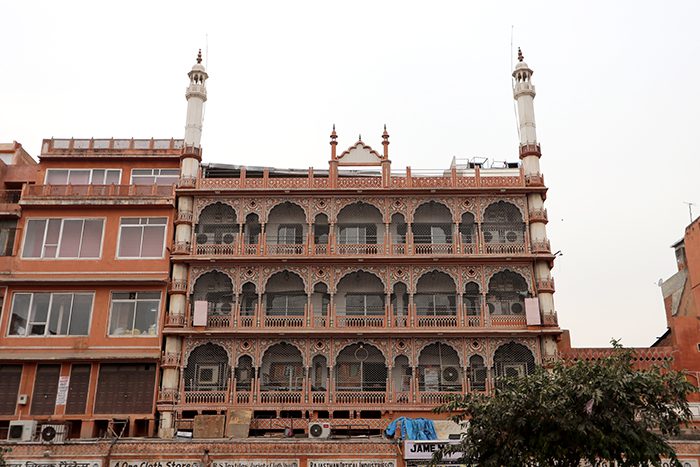
Deep within the market’s tighter lanes are the jeweler workstations, where you can watch trained craftsmen create intricate jewelry with semi-precious stones and gems including emeralds, topaz, sapphires, and even diamonds. If you’re on a tighter budget, you can also find vendors selling cheaper items like silver bangles and wood-carved souvenirs.
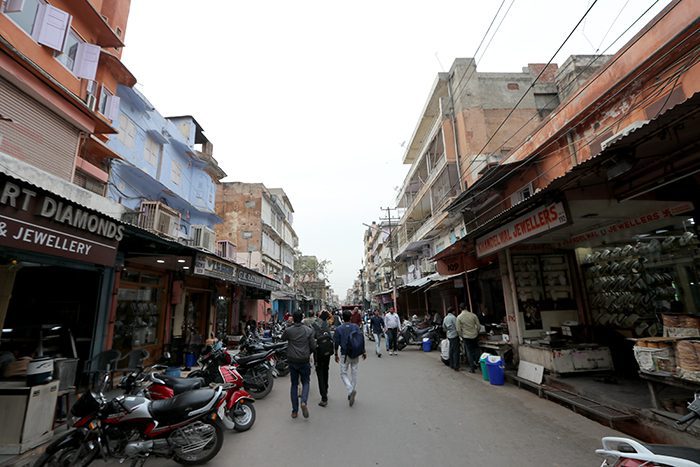
When you come to Johri Bazaar, be sure to bring anywhere from $300 to $500 U.S. at the very least. There are lots of quality items tucked away in the tiny shops and stalls and you won’t want to miss an opportunity to take them home with you. And don’t be afraid to haggle with the vendors! You can get fantastic deals that way!
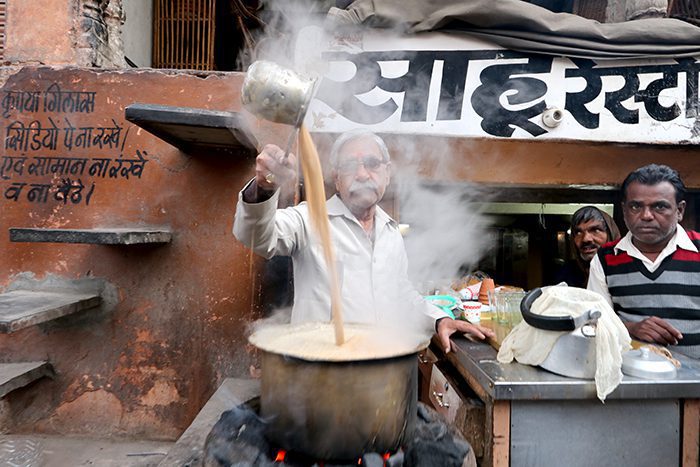
The rich and magnificent Rajasthani heritage in Jaipur, India doesn’t just begin and end with its fabulous historical sites. It extends to its food as well, which is among the best you’ll find in India.
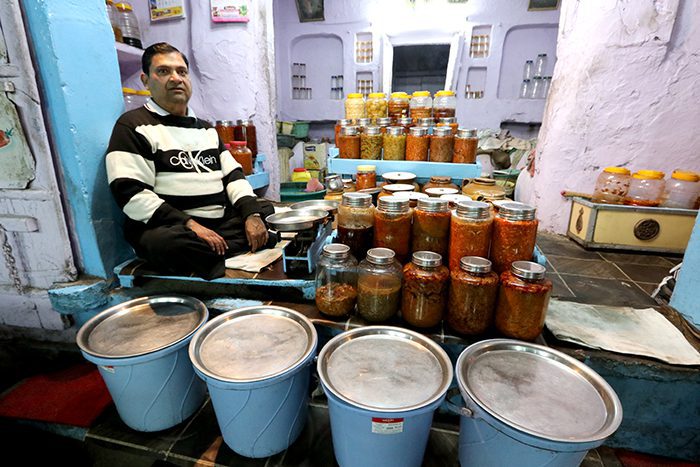
During my time in Jaipur, I went on a fantastic nighttime food tour with my friend Atray from Hungry Walks, in association with Delhi Food Walks.
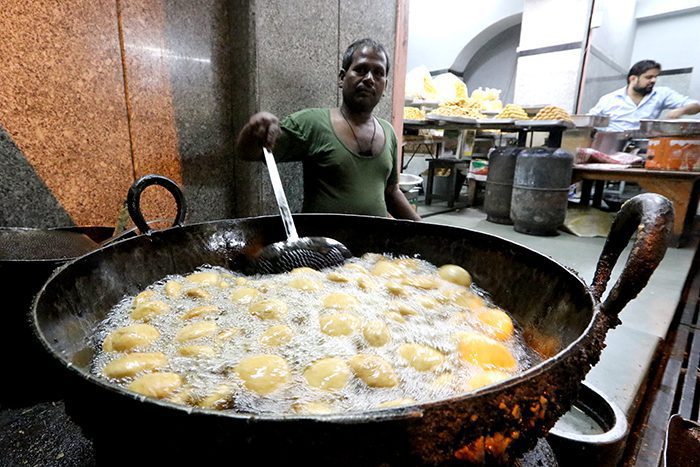
There is a wide variety of dishes to try, but I recommend starting with some chai before moving on to dishes like aloo tikki, papdi chaat, mishri mawa, kachori, and mouthwatering Rajasthani favorites like Gatte Ki Sabzi, Daal, Aloo Pyaz Sabzi, and Bejad Ki Roti.

You can’t come to Jaipur without experiencing a street food tour at night! It’s the ultimate street food experience!
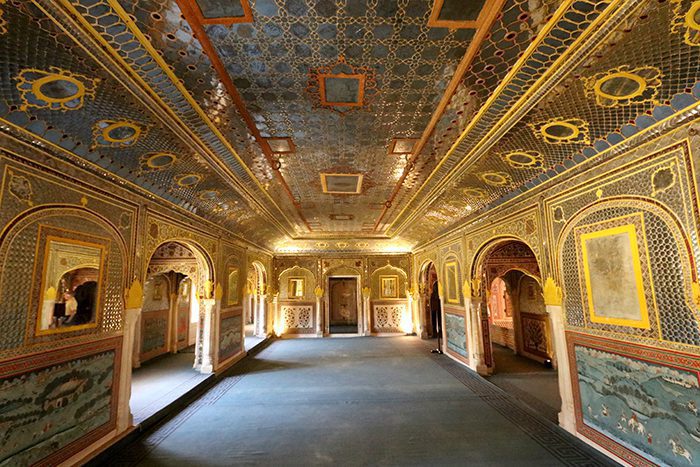
When planning your time in Jaipur, India I highly recommend you add an extra day to your itinerary so you can take a day trip 45 minutes north to the nearby Samode Village. This village boasts several remarkable landmarks, most notably Samode Palace, a beautiful 16th-century fort that was converted into a palatial estate in the 19th century by a nobleman.
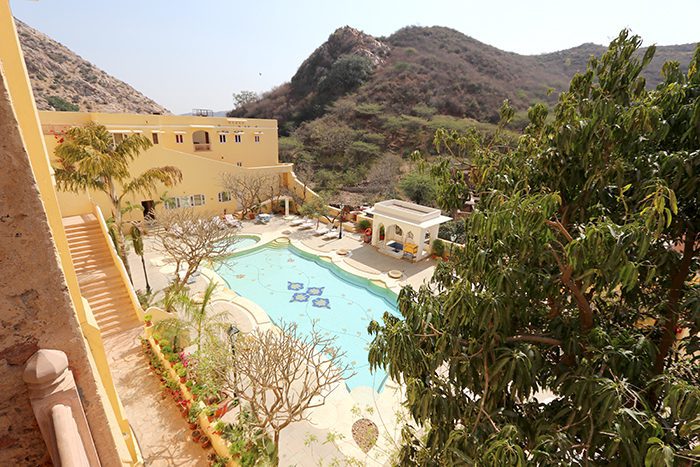
The palace is now also a luxury hotel, which is a great place to lay your head if you want to spend the night. Take a tour of the palace to view the fantastic accommodations and the glittering mirror room, and take a moment to have lunch in their phenomenal restaurant. I went with the chicken tikka and their juicy, tender mutton burger.
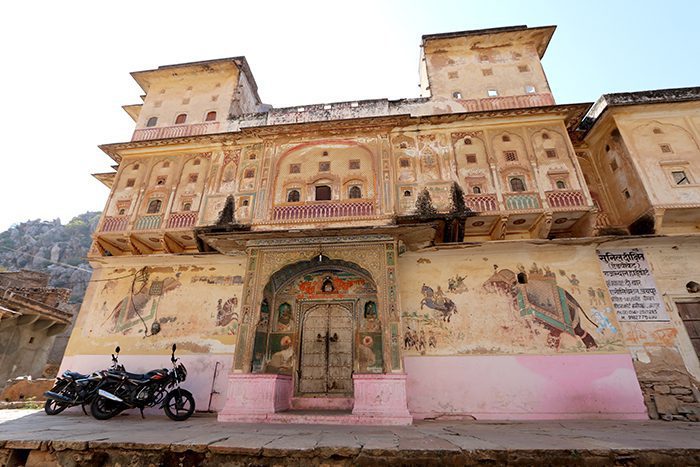
Don’t forget to stop by the village to visit another fascinating site, the Samode Haveli Stepwell. Afterward, explore the village to see expert craftsmen making silver jewelry and blacksmiths creating tools.
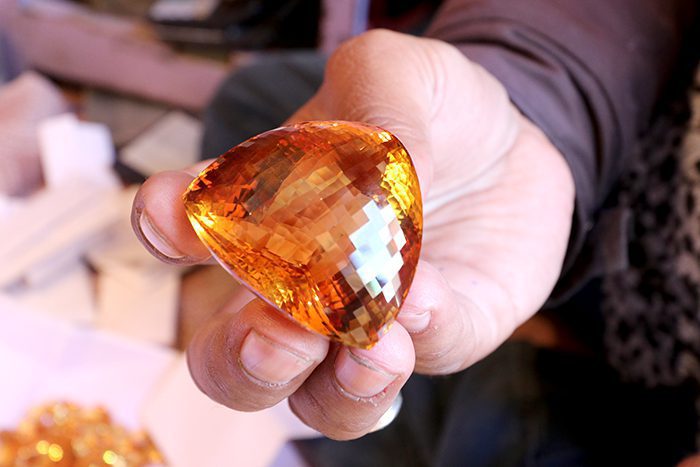
During my time in Samode, I also got to watch a gem dealer clean one of the biggest and most stunning gemstones I’ve ever seen! Do not miss out on spending at least a day in this amazing village. Taking a day trip here is easily one of the top things to do in Jaipur!
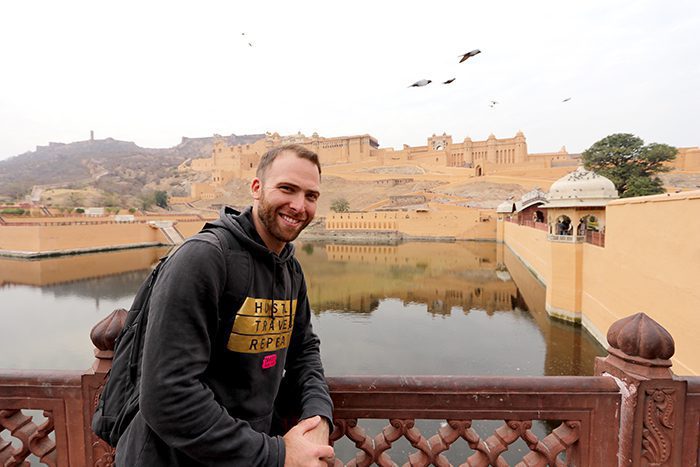
Diving into the history, heritage, and cuisine of the Pink City of Jaipur, India. is the only way to truly appreciate this unique Rajasthani city. From its gorgeous, imposing forts to its bustling bazaars and fantastic eats, this is a city that must be explored with all five senses. Anything less than that would do it, and yourself, a huge disservice.